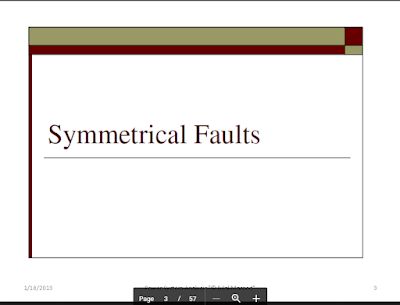Symmetrical & Unsymmetrical Faults
Normally, a power system operates under balanced conditions. When the system becomes unbalanced due to the failures of insulation at any point or due to the contact of live wires, a short–circuit or fault, is said to occur in the line. Faults may occur in the power system due to the number of reasons like natural disturbances (lightning, high-speed winds, earthquakes), insulation breakdown, falling of a tree, bird shorting, etc.Faults that occurs in transmission lines are broadly classified as
- Symmetrical faults
- Unsymmetrical faults
Symmetrical faults
In such types of faults, all the phases are short-circuited to each other and often to earth. Such fault is balanced in the sense that the systems remain symmetrical, or we can say the lines displaced by an equal angle (i.e. 120° in three phase line). It is the most severe type of fault involving largest current, but it occurs rarely. For this reason balanced short- circuit calculation is performed to determine these large currents.Book
- Power System Analysis by Grainger and W.D. Stevenson
- Power System Analysis and Design by J. Duncan Glover,Mulukutla S. Sarma and Thomas J. Overbye
- Power System Analysis by Hadi Sadat
- Principles of Power Systems by Mehta
Author Bilal masood
lecture 10
Type ppt
Availability Available online
For read this book online or Download click the below link


No comments:
Post a Comment